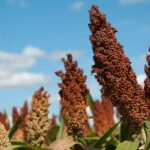Agriculture is the backbone of many economies worldwide, but expensive and scarce agricultural labor has become a significant challenge in recent years. The situation has also worsened with the pandemic, with further travel restrictions threatening food security.
Given this looming problem, artificial intelligence (AI) has gained significant traction in the agricultural space—specifically for automating laborious processes. AI weeding robots, in particular, have been taking the industry by storm as they help promote efficiency and address the labor shortage problem. Get more about how these robots work and the market forecast below.
How AI Weeding Robots Work
Traditionally, weeding is one of the most labor-intensive activities in farming since you must find the weeds and handpick them manually. While you can use pesticides or herbicides to kill off weeds, these chemicals are often expensive and may potentially contaminate your crops.
AI weeding robots thus aim to solve these concerns by automating the weeding process and eliminating the need for chemicals. Of course, the actual mechanism may vary from one robot to another. However, the general premise is that the device uses AI to detect weeds and cut them out of your crops.
For example, the Autonomous LaserWeeder is a 9,500 lb machine that can roll through fields at five miles per hour. Apart from AI, the robot also uses GPS, cameras, and laser technology to kill off weeds. The GPS and cameras help make the robots self-drive smoothly, while the AI technologies make the robots “smart” and distinguish between weeds and crops. Finally, the lasers are in charge of zapping the weeds.
Of course, there is still room to improve the AI weed robots available today. However, given that they are still in their nascent stage, they have already made a significant impact by saving farmer’s time and labor and helping them keep their crops healthy. Though adoption remains relatively low, you can expect this to grow significantly in the coming years.
AI Weeding Robots Market Growth
The robotic weeding machines market is forecast to grow with a CAGR of 21% from 2020 to 2025. Unsurprisingly, the growth will be primarily driven by the increasing need for weed control. As mentioned above, the traditional weeding process is far too labor-intensive, so AI robots help solve this pain point for farmers.
That said, costs will likely be an obstacle, given that AI weeding robots require a high initial investment. Technically, they can generate cost savings in the long run since they help you maximize crop yield and eliminate the use of pesticides. However, not everyone can readily shoulder the upfront cost, which may impede the market’s growth.
Nonetheless, the overall market outlook is positive as AI has proven valuable in the agricultural industry. For example, even before the AI weeding robots came into the picture, AI systems were already being used in the industry for better harvest quality and accuracy.













